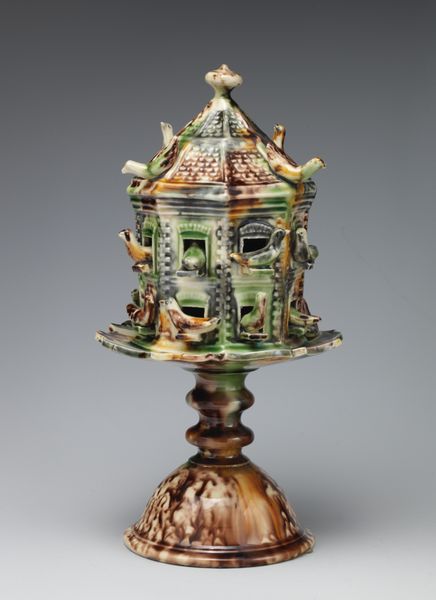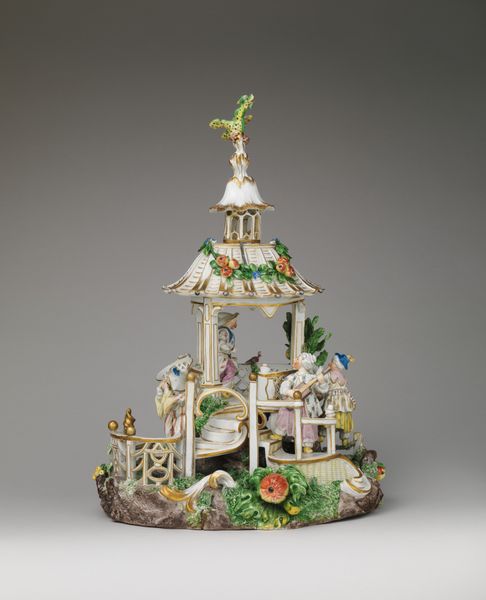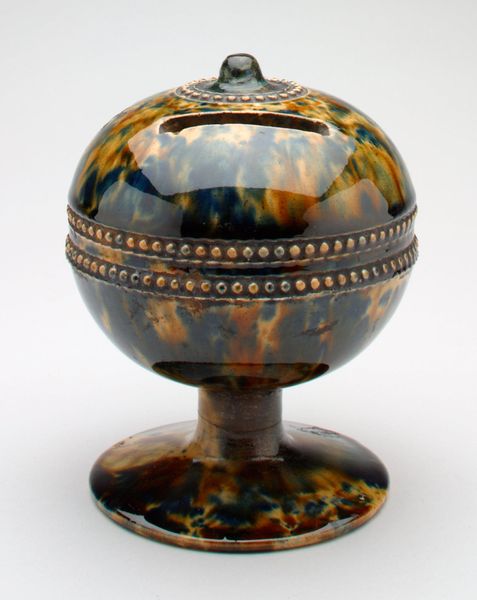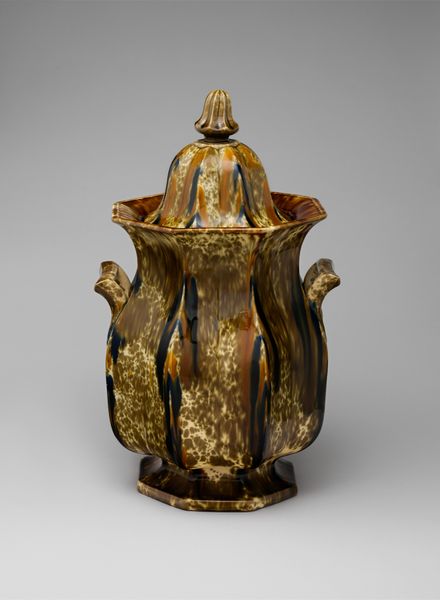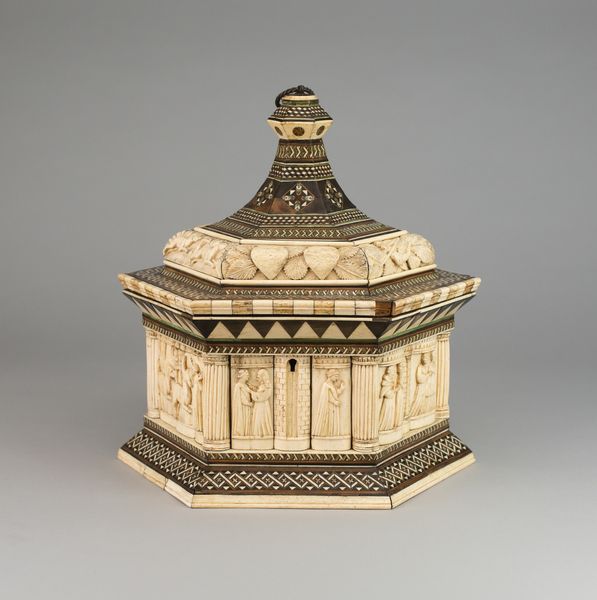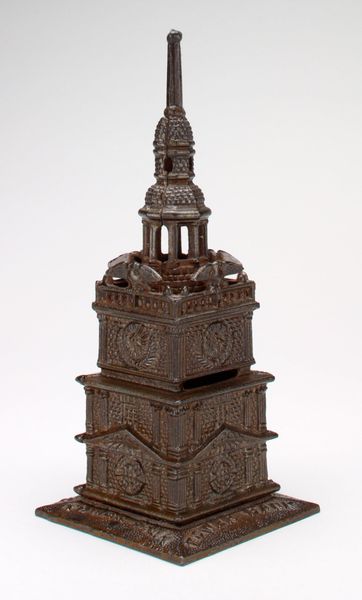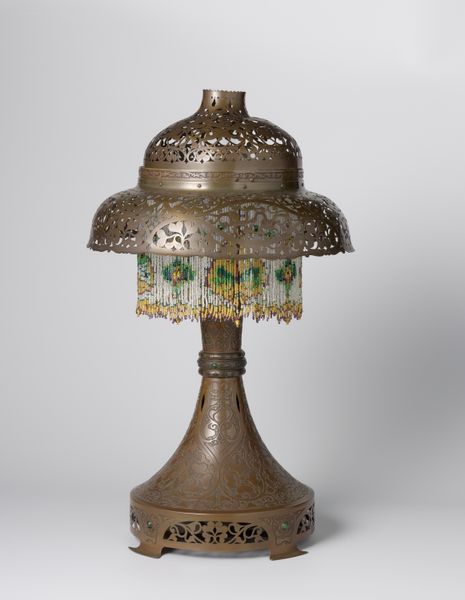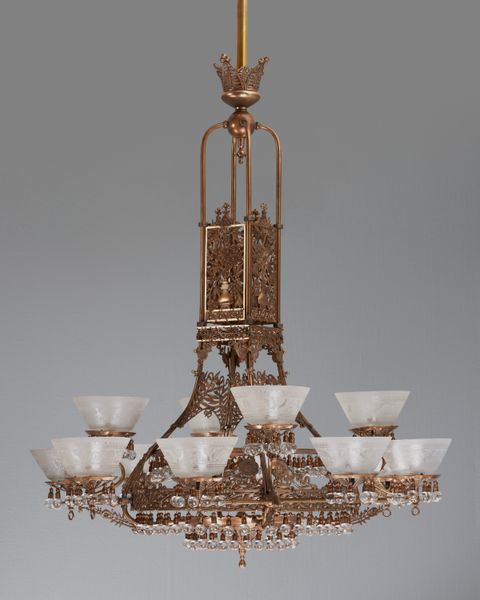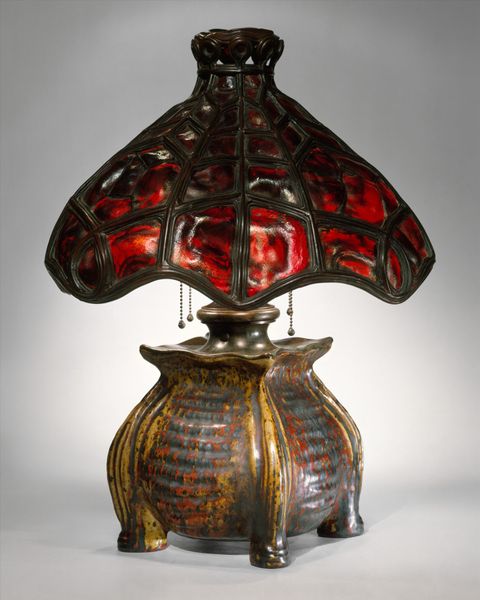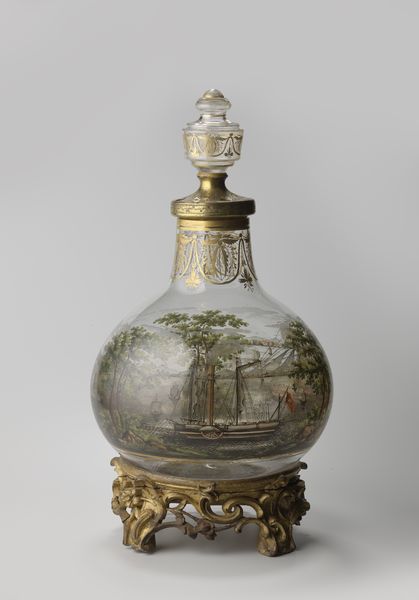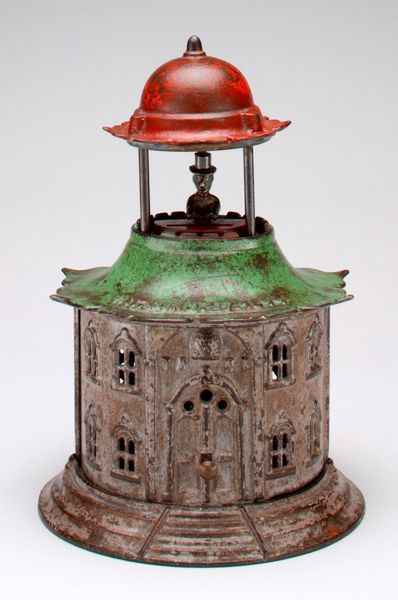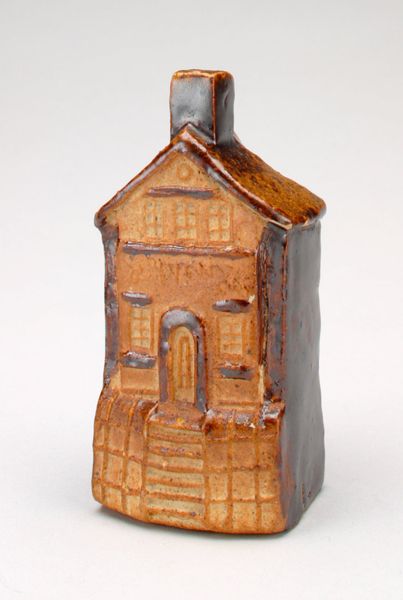
ceramic, sculpture
#
ceramic
#
bird
#
sculpture
#
decorative-art
#
rococo
Dimensions: Height: 9 1/2 in. (24.1 cm)
Copyright: Public Domain
Editor: Here we have "Dovecote (one of a pair)" made between 1745 and 1765, of the Whieldon type, created in ceramic. It’s delightful. The way the birds perch all over the little house…it feels whimsical and intricate. What can you tell me about it? Curator: Focusing on the materiality, it is fascinating to consider Whieldon ware within the context of its time. We see this dovecote reflecting the burgeoning ceramic industry. Staffordshire potters like Whieldon were experimenting with new techniques and glazes, striving to imitate imported porcelain but operating within a very different structure of labor. What do you make of the contrast between the intricate design and its function, if any? Editor: Its function? Well, presumably it’s decorative. I suppose it would house birds, but its delicacy suggests something more ornamental. Does that speak to a change in attitudes toward labor? A sort of… conspicuous display of the potter's skill? Curator: Precisely! The intense labor and new methods poured into it signal consumption and wealth. While it references nature and rustic life through the birds and dovecote form, its purpose speaks to a distancing from that same life. How might this "natural" form made in this time period connect to other decorative art? Editor: Thinking about Rococo, there’s that similar love for asymmetry and elaborate detail... perhaps a similar detachment from the realities of producing these luxurious items. There's something uneasy about that connection. Curator: Absolutely. The dove cote, cast from clay by underpaid workers, mirrors back the complex socio-economic structure where high society flaunted “nature." This object’s labor practices highlight social divides as much as Rococo delight. Editor: So the charm and artistry of it really conceal, or perhaps reveal, deeper truths about 18th-century society and craft production. I’ll never look at a ceramic birdhouse the same way! Curator: Exactly. And by focusing on the materials and their making, we uncover histories embedded within these seemingly simple objects.
Comments
No comments
Be the first to comment and join the conversation on the ultimate creative platform.
